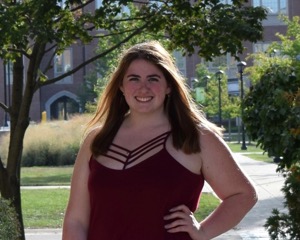Students’ thoughts on Student Accessibility Services
Feb 27, 2020
As a Jesuit institution, John Carroll aims to be inclusive and caring. Student Accessibility Services on campus has the same goal — to ensure a safe, welcoming environment for all.
Matthew Loughran ‘21 has gone through SAS for testing accommodations since his freshman year. In high school, he was able to have extra time for tests and took exams in a distraction-free setting. As he approached his college years, he began to worry if he would be able to have the same accommodations at a smaller university like JCU.
“Coming into college, I was not sure if I could [still get accommodations]. My admissions representative, as soon as I voiced this concern, got me in contact with the [Student Accessibility Services],” Loughran said.
He said the process to receive these accommodations is simple. “At the beginning of the semester, I list my courses that I am taking. I get a form from SAS and they write up a description saying that I get extra time on tests and take them in a different room, then I print it out and give it to my professors.”
An additional bonus is building community in SAS. Loughran said that, although he has not been able to attend any events hosted by SAS yet, he appreciates that they are available.
“It is nice to have an environment where everyone is on the same page and meet new people too. I feel like they really make it a safe and welcoming space.”
The services provided expand to more than just academic accommodations, said Allison West Kaskey, director of SAS.
“A lot of people don’t realize we provide non-academic accommodations as well. We handle housing accommodations, meal-plan accommodations, parking accommodations and approval for assistance animals,” she said.
These services include working with Dining Services to meet students’ dietary needs, making on-campus parking available to freshmen and sophomores to accommodate for frequent doctors’ visits or arranging for a student who needs to live in a single room in the residence halls. SAS works with other resources on campus to help meet the needs of students.
Additionally, Kaskey said SAS has established a new procedure for absences. “Another academic accommodation is an attendance accommodation for those students with chronic health issues or mental health issues.
“The student and the instructor have to sign an agreement with the number of reasonable absences. That has been helpful for students, faculty and our office to be on the same page. We didn’t have anything in place before, but now we have this additional step in the process to encourage the student to talk with the professors and come up with a plan. That has been really successful,” Kaskey said. There are around 30 students who have used the attendance accommodation this year.
Approximately 500 students use SAS services, according to Kaskey, and students seem to have a positive attitude towards the office. Loughran stated that SAS has been “very helpful. I am grateful that John Carroll has a program like this.”
Peter Knab, former student and active member of the WJCU staff, said, “One thing I’ve noticed from the beginning of my time at John Carroll is that the Student Accessibility Services does a great job of helping you when you need it but not so much that you feel like a different class of student.”
Knab has mobility issues and uses a wheelchair to get around campus. Although there are some accessibility problems, such as the pothole between O’Malley and the library, Knab said campus is fairly accessible.
One challenge that Knab faces is going uphill to enter the library. Prior to purchasing his Smart Drive wheelchair, which John Carroll students helped raise money to buy, the library was particularly difficult to access. Knab suggested adding access to the freight entrance for students who have accessibility issues.
Kaskey addressed this problem, saying “In the future, they are looking at renovating the library and they are looking at accessibility as part of that. They will have more accessible entrances for students to access the library.”
In terms of other accessibility problems, such as handicapped door buttons malfunctioning or elevators being out-of-order, Kaskey said, “I recommend that students, faculty and staff test the [handicap] buttons too, because they are battery operated. Let us know or let facilities know [if one is not working] and we will replace the battery. Facilities [staff] are very quick to notify our office so we can notify any students that may be impacted.”
Knab explained that when there is a situation, such as the elevator in the student center being out-of-service, Facilities staff act swiftly. “For the most part, in fact I’d say essentially all the time, the University has been very quick to fix things. I keep in very good communication with maintenance workers, and whenever I notice something, it is taken care of very quickly.”
Additionally, Knab said his concerns are listened to and responded to. For example, facilities added handlebars, at Knab’s request, in the locker room showers to make them more accessible for people who use wheelchairs.
Knab concluded, “The overall impression I want to give is that the University has been very responsive.”













